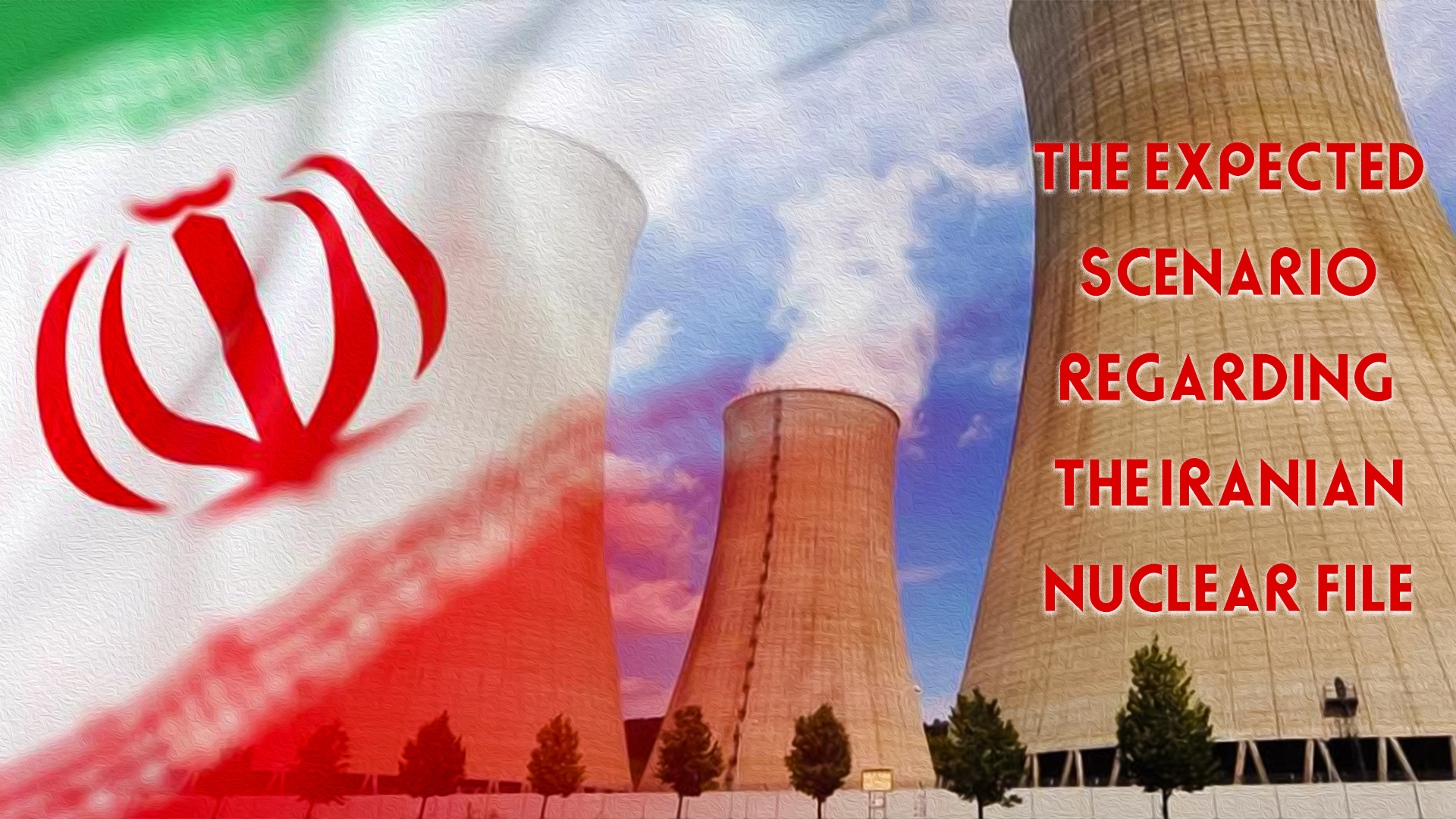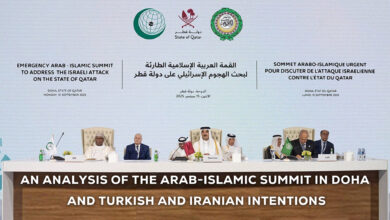The expected scenario regarding the Iranian nuclear file and its impact on Syria and the Autonomous Administration
Dr. Ahmed Sino

The article expresses the writer opinion
Iran and some of its proxies have been pushed back from the Middle East following Israeli attacks on Hezbollah in Lebanon, which resulted in the death of Hezbollah’s Secretary-General Hassan Nasrallah and some of its leaders. Israel continues to monitor Hezbollah’s activities and movements and follow its recent statements. It has launched strikes on some buildings belonging to the party in the recent period. Israel has also launched deadly strikes against Hamas in Palestine in response to the hostages kidnapped by Hamas. It has also launched attacks against arms depots belonging to the Syrian regime and contributed effectively to destroying the military structure of the Syrian army. It continued to launch attacks even after the fall of Bashar al-Assad regime and contributed with the United States and Britain to the arrival of factions from Hay’at Tahrir al-Sham (HTS) to the Presidential Palace in Syria, finding in that a pretext to occupy areas of southern Syria, until it was only a few kilometers from the capital Damascus. It allowed sheikhs from the Druze community to enter Israel to visit the religious holy sites of the sect.
However, Iranian proxies have not ended. There are the Houthis in Sana’a and Hudaydah who have influence in the Red Sea. Therefore, the United States of America itself has launched dozens of attacks against the Houthis, their centers, arms depots, warehouses, and missiles supported by Iran. It also targeted the homes of Houthi leaders in Sana’a and Saada. Operations are still ongoing against the Houthis as an effective proxy for Iran. In fact, the matter has intensified with Britain re-entering the fray by launching attacks against the Houthis and their bases in Yemen, Sana’a, Hudaydah, and the Red Sea. This is part of the new American strategy of the Trump era, saying: America First, and then pursuing a policy of maximum pressure to end international wars and conflicts to force them to enter into negotiations. This is what American policy is doing in various parts of the world, such as ending the war and conflict with Ukraine, and doing so with the European Union and NATO and with the People’s Republic of China, in order to strengthen American influence, and come out with win-win deals with everyone and obliging them to raise the percentage of participation in funds and allocations in NATO, and in Ukraine, agreeing on a minerals treaty, and with China, raising American tariffs on Chinese imports; meaning exercising maximum pressure to drag them into negotiations that achieve extortion and American benefit, and this is what America is practicing with Canada and with Mexico.
By directing painful strikes against the Houthis in Yemen, America is exercising maximum pressure, and indeed brought Iran to negotiations that took place in Amman and in Italy at the Omani embassy, and perhaps negotiations will resume in the Sultanate of Oman. Those (American-Iranian) negotiations were described as positive and acceptable to both sides in the past three times. Although the United States had previously reached a nuclear agreement with Iran, in the first term of President Trump, he announced his withdrawal from it, but this time the United States itself is calling for negotiations in order to achieve a kind of stability in the Red Sea region, the Arabian Gulf, the Strait of Hormuz, the Arabian Sea and the Indian Ocean, to secure international maritime navigation for the entire NATO alliance, especially the United States and Britain. Also, US President Trump refuses to pay fees for his ships and vessels in the seas, straits and gulfs, and this was mentioned recently regarding the Suez Canal and the Bab al-Mandab Strait.
The Expected Scenario for the Nuclear Agreement:
After the completion of ongoing negotiations between the parties, it is expected that the United States will refuse to allow Iran to become a nuclear state like India and Pakistan. It will also refuse to allow Iran to possess a nuclear bomb because that would pose a threat to its allies in the region, especially the State of Israel. It also poses a threat to stability in the region, especially Saudi Arabia and the Gulf states, which are subjected to American blackmail, especially during Trump’s current term. It is expected that the United States will agree that Iran retains its long-range missiles and some of its strategic weapons to remain influential in the region and remain a force to be reckoned with as a threatening card in the Arabian Gulf region. This is because the Gulf states seek to remain under the American umbrella for fear of Shiite Iran, which the Gulf states, especially Saudi Arabia, the UAE, Oman, and others, do not trust.
One of the reasons America might reach an agreement with Iran is to limit Turkish influence, which has unexpectedly dominated Syria, as well as to limit Islamic influence and the Muslim Brotherhood movement supported by Qatar. It is expected that if a nuclear agreement is reached between the two sides, Iran will retain the authority of the Supreme Leader in Iran. Its influence will increase in Iraq, and the Shiite factions will remain in Iraq, especially since the Shiite factions, such as the Popular Mobilization Forces and others, are working to legitimize their presence inside Iraq with a constitutional cover to confront ISIS, which threatens the security of the entire region. If an understanding is reached between the two sides, the billions of Iranian dollars frozen in American and European banks will be released, and the Iranian economy will be stimulated, especially since Iran has suffered painful blows at Bandar Abbas port, where the explosions affected toxic materials in the port that had been stored incorrectly according to some reports. Despite this, fingers of blame are pointing towards Israel, which has previously targeted and attacked Iran when it managed to assassinate Ismail Haniyeh.
Impact of the Scenario on Syria and the Autonomous Administration Areas:
It is expected that if an understanding is reached with America regarding the nuclear agreement, it will be with Israeli and British approval, and it will have an impact on the region in general and on Syria as well. This means that some international understanding will occur regionally, and this understanding will have effects in Syria. The regional understanding will include Britain, France, America, Israel, Turkey, and Iran. This means that Iranian influence and its political, religious, and perhaps economic role will return to Syria, but not as it was during the era of Bashar al-Assad regime. This influence will be with Russian agreement in the Syrian coastal region.
The Iranian presence will put an end to the uncontrolled militias affiliated with Turkey and Hay’at Tahrir al-Sham. Iranian and Israeli influence after an understanding on the nuclear issue will put an end to Turkey’s influence and presence in Syria and will weaken the role of its intelligence services and secret bases. This may help Ahmed al-Sharaa to accept decentralization and lean towards federalism because he will get rid of the foreign factions and their role, and he will be freed from Turkish hegemony. He will accept the American, French, and German conditions and complete the understandings and agreements with General Mazloum Abdi. He will draft a constitution for the country and accept all components of the Kurds, Druze, Alawites, and Syriacs. The name of the state will change to become “The Syrian Republic,” and the Kurdish language will be recognized as an official language along with the Syriac language. Islamic jurisprudence will become one of the sources of legislation in accordance with all religions and laws.




